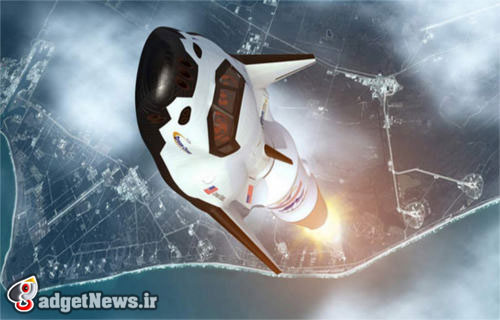
هفته گذشته ناسا پیش نویس درخواست برای آغاز فاز چهارم و پایانی توسعه برنامه خدمه تجاری خود را منتشر کرد. پس از بررسی و اصلاحات احتمالی، درخواست نهایی نشر خواهد یافت. هدف این برنامه ابتکاری، پرتاب خدمه تجاری و نه نظامی، به ایستگاه بین المللی است. اگر پیشرفت کارها طبق برنامه باشد این کار در سال ۲۰۱۷ و از خاک ایالات متحده انجام خواهد شد.
برنامه خدمه تجاری تلاشی است از سوی ناسا که به منظور توسعه تجاری سیستم های فضانوردی در ایستگاه فضایی اجرا می شود. بر اساس این پیش نویس، قرار است پس از بهره برداری از پروژه، سالانه دو پرواز تجاری به مقصد ایستگاه فضایی انجام گیرد.
قبل از انتشار درخواست نهایی ناسا در پاییز، این آژانس میزبان یک گرد همایی در مورد پیش درخواست منتشره خواهد بود. این گردهمایی با صنایع مرکز فضایی کِندی در فلوریدا برگزار می شود و بحث های مهم مالی در آن مطرح خواهد شد. البته همان طور که از پیش هم انتظار می رفت هزینه این سفر به صورت مبلغی معین، تحت مقررات مالکیت فدرال ایالات متحده خواهد بود.

در این پروژه عظیم شرکت هایی مانند بوئینگ، اسپیس ایکس و سیرا نوادا همکاری دارند و هر یک بخشی از کار را انجام می دهند. بوئینگ و اسپیس ایسک روی کپسول های فضایی تحقیق می کنند در حالی که سیرا نوادا طراحی بدنه سفینه را بر عهده گرفته است. البته این یک پروژه آزاد و باز است و هر شرکتی که توانایی مالی و فنی در زمینه علوم فضایی داشته باشد می تواند در آن شرکت کند.
ناسا بارها اعلام کرده که سالانه بیش از ۸۰۰ میلیون دلار نیاز دارد تا این برنامه را سر تاریخ مقرر در ۲۰۱۷ عملی کند. اما این مبلغ از بودجه ای که کنگره آمریکا به این پروژه اختصاص داده چند صد میلیون دلاری بیشتر است. باید منتظر ماند و دید که آیا بالاخره این سنگ بزرگ زده می شود یا هنوز برای اجرای چنین پروژه های بلند پروازانه ای خیلی زود است؟
منبع : www.en.gadgetnews.net
Private Astronaut Taxi Development Entering Final Phase
Last week, NASA released a draft solicitation for the fourth and final development phase of its Commercial Crew Program — an initiative that has plans for a crewed space launch to the International Space Station from U.S. soil by late 2017.
The Commercial Crew Program is a NASA effort that subsidizes commercial development of systems to ferry astronauts to and from the space station. According to the draft solicitation, there would be two such flights per year, once NASA places its first task order for a crewed flight.
Before NASA releases the final solicitation this fall, the agency will host a pre-solicitation conference with industry at the Kennedy Space Center in Florida on Aug. 1 and 2, according to the draft. As expected, the contract will be a fixed-priced deal administered under the Federal Acquisition Regulations. So far, NASA has mostly relied on funded Space Act Agreements to subsidize development of commercially designed spacecraft.
While the competition is nominally free and open, it is generally believed that the companies with the best chance are those NASA is already funding as part of the third round of the Commercial Crew Program: Boeing Space Exploration Systems, Houston; Sierra Nevada Corp.'s Space Systems of Louisville, Colo.; and Space Exploration Technologies (SpaceX) of Hawthorne, Calif.
Boeing and SpaceX are working on capsules, while Sierra Nevada has a lifting-body design. All three spacecrafts could seat seven people. Boeing and Sierra Nevada plan to launch aboard United Launch Alliance's Atlas 5 rocket, while SpaceX plans to use whatever iteration of its own Falcon 9 rocket is in operation in 2017.
If the schedule and funding hold, the planned demo flight — part of what NASA is calling the Commercial Crew Transportation Capability Contract — would be the first crewed orbital spaceflight launched from the U.S. since 2011, when the space shuttle program ended.
NASA has repeatedly said it needs more than $800 million a year — hundreds of millions more than Congress has ever given the program — to meet the 2017 date and keep more than one company involved with the program.
 گجت نیوز آخرین اخبار تکنولوژی، علم و خودرو
گجت نیوز آخرین اخبار تکنولوژی، علم و خودرو 





